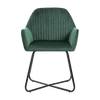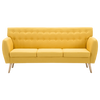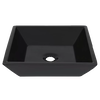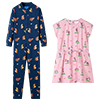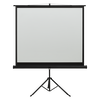How to select the best sunloungers
Investing in the best sunlounger is a great way to create a resort-style outdoor space for relaxing when the sun comes out. Sunloungers are a must-have for most homeowners during the summer months. Actually, they are one of the most highly sought-after outdoor furniture these days. They offer the perfect blend of style and comfort that suit different gardens.
But which sun lounger should you choose? What size or style suits your space? These are questions that come to mind when thinking about buying a sun lounger. Well, many options are available on the market, making it difficult for a buyer to find the right sun lounger for their outdoor living area.
Luckily, we’re here with some useful advice to help you. This guide will walk through selecting a sun lounger that will provide the comfort you need when soaking in the sun and enhance the look of your outdoor space.
Types of sun loungers
One of the most important factors to keep in mind when you want to buy a sunlounger is determining how you want to use it. Sunloungers come in modern and versatile styles to suit your needs. An outdoor sun lounger in a full-reclined position is great for sunbathing, lounging, and relaxing, while a semi-reclined position is ideal for holding conversations or reading a book.
Folding or fixed
Folding chairs need no introduction. They are common in many homes and recreation centres. When folded, they take up less space in your outdoor living area. They are also easy to transport and store. On the other hand, fixed sun loungers occupy more space but are more solid than folding loungers.
Fully flat
Sun loungers that are fully flat, or can be adjusted to a flat position, are the best choice for tanning on your stomach. Adjustable models are particularly popular and often come in different materials.
S-Shaped
As the name suggests, s-shaped sun loungers look like the letter S. These loungers follow the body's contours and usually provide better support for people with lower back pain. You will often find these loungers in different materials.
Multi-purpose
These sun loungers are extremely versatile. They allow you to lounge in every possible way – from an upright position to a deep recline. However, most models don't go fully flat. Multi-purpose sun loungers often have large armrests for added comfort.
What material of sun lounger should you choose?
Sun loungers come in different materials, each with its distinct advantages. Your choice of material will determine the look and durability of your sun lounger. So, choosing a material that suits your needs is always important. Below, we discuss the different materials you can choose for your ideal sunlounger chair.
Wood
Wooden sun loungers are often constructed from hardwoods like teak. However, you can still find sun loungers made from softwood, but the timber would need to be treated before being used outdoors. A great alternative to teak is acacia wood. It’s not only sturdy but also resistant to dirt and fungi. Wood is a timeless classic that will always lend its natural look to your outside area. With proper care, sun loungers made from wood will remain in top condition for many years.
Plastic
Durable, inexpensive, and easy to clean, plastic is one of the most common materials used in making sunloungers. Plastic sun loungers never go out of style and can be a fantastic budget option for people who don't have much to spend on sun loungers. However, you’ll have to throw in some removable cushions for added comfort, as the material can be hard. It also heats up in the sun.
Aluminium
Sun loungers made from aluminium are lightweight, weather-resistant, and durable. This material is only used to construct the frame of sun loungers. Aluminium is available in powder-coated or painted finishes. It also makes it possible to create pieces that allow for easy portability. In addition, aluminium does not present issues related to corrosion. It also requires very little maintenance.
Steel
Known for its sturdiness, practicality, and shiny appearance, steel is one of the most common materials for furniture. Steel is versatile as it can fit perfectly in most spaces. Think of the different spaces you have seen steel furniture – patio, balcony, gym, poolside, restaurants. Compared to other materials, steel is environmentally friendly. So, if you are an environment-conscience person, choosing steel sun loungers will contribute to your noble cause of saving the environment. Steel garden furniture is also easy to clean and maintain.
Poly rattan
Natural rattan looks great; however, its fibres often rot when exposed to harsh weather conditions. It will also fade and get damaged faster when exposed to sunlight. Fortunately, there is an excellent alternative in the form of poly rattan or synthetic rattan. Not only does this material look like natural rattan, but it’s also weather resistant and lasts longer. Sun loungers made from poly rattan will add a natural look to your garden. They are also easy to maintain.
Polypropylene
Also known as synthetic resin, polypropylene is a thermoplastic material used in numerous applications. It is a great material for making sun loungers and garden furniture in general. The main advantages of polypropylene are that it is light, sturdy, and durable. It is also environmentally friendly and resistant to chemicals. Sun loungers made from polypropylene are the best option for beach areas as they are resistant to salt residues.
Fabric
Sun loungers made from fabric are sturdy, comfortable, and dry relatively quickly. They are also easy to repair when damaged. The fabric used in most loungers is also UV resistant and does not fade when exposed to the sun. They can also work with any style as they come in different hues. You also don't need cushions because they are naturally comfortable. However, the fabrics may not be wind-resistant, so you may want to bring the lounger inside when the winds blow.
Extra features to look for when choosing sunloungers
There are a few extras to look out for when selecting a sun lounger. These features ensure you get a practical and comfortable sun lounger for your outdoor living area.
-
Wheels
If you have a large outdoor living area and you often shift your sun lounger from one place to another, choose a sun lounger with wheels. This makes it easier to move the lounger to different places. Selecting a lightweight sun lounger can also assist with easy movement.
- Comfort
When selecting a lounger, ensure it’s either cushioned or padded. You can also add some padded cushions to your sunloungers for extra comfort. However, if you want to use the sun lounger near a swimming pool, where it’s likely to come in contact with water or sunscreen applied to your body, padded cushions can be challenging to keep clean.
- Height, width, and weight capacity
Some sun loungers are too narrow, making turning a bit difficult. In addition, widths differ significantly between the different designs, so it's always important to choose the right size. If you want some added flexibility or you’re struggling with a low sunlounger, a reclining outdoor chair can make a great choice.
- Storage
It’s a good idea to cover your sun loungers during winter. Check whether you have enough storage room for the lounger. If not, opt for a folding sun lounger, which could be easy to store.
How to maintain your sunlounger
Like other garden furniture, your sunlounger chairs need to combat the elements, which pose a high risk of damaging the furniture. While you can’t do anything about the weather, there are a few things you can do to keep your garden lounger in top condition throughout the year. Here are a few care tips you can try.
Wooden material
Hardwood is not only strong but also resilient. It can stay outdoors all year round. However, that doesn’t mean it doesn’t need care. Wood requires little maintenance. Cleaning with a cloth soaked in soapy water should do the trick. It's, however, not recommended to use abrasive or harsh chemicals as they may damage the wood. Wipe gently to avoid damaging the natural look of the wood. You can leave the sun lounger in the sun to dry completely.
Plastic material
Plastic loses colour and sturdiness when exposed to dust, dirt, bird droppings, and other harsh conditions. You must take care of your plastic sun lounger by cleaning it regularly. You'll need a wet cloth soaked in soapy water to clean your plastic lounger. After cleaning, use a dry cloth to wipe it down and remove the remaining water. Then leave it to dry. Plastic garden loungers can withstand vigorous cleaning compared to wood loungers.
Metal material
Although metal sun loungers usually come painted or powder-coated, you still need to maintain them to keep them looking fresh throughout the year. You can clean this material using a piece of cloth soaked in mild dishwashing soap. Rinse thoroughly after washing and leave it to dry. If you want to take the maintenance an extra mile, apply clear car wax on the surface of the sun lounger at least once a year. You can also repaint the furniture with the same colour of paint.
Fabric material
You can clean most fabrics in the same way you clean wood. However, not all fabrics are the same. Some are more delicate and will require careful cleaning. Warm water mixed with a mild washing-up liquid should work. You can also use laundry detergent for cleaning fabrics. Apply the detergent on a clean cloth and wipe the material gently. Once you’ve removed the stains or dirt, rinse with clean water to remove the soap. Then leave the material in the sun to dry naturally.
Here at vidaXL, we have a wide selection of sunloungers. Browse our collection to find the perfect sun lounger for your space.
Looking for other products? Check out the categories below:
Type: Multi-Position Sun Loungers

